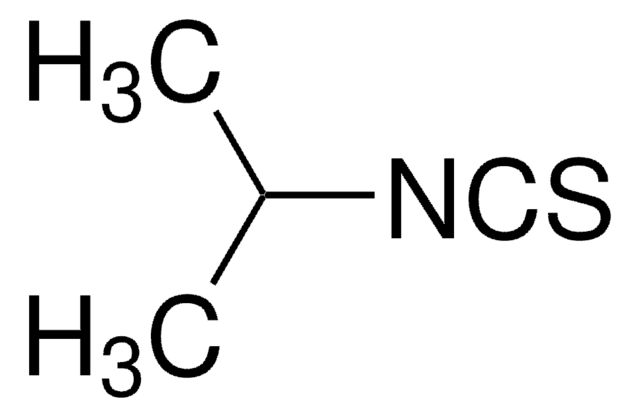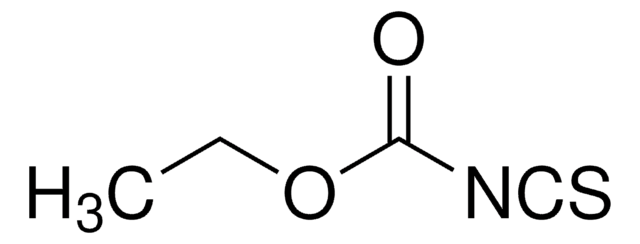E33904
Ethyl isothiocyanate
97%
Synonim(y):
Ethyl mustard oil
About This Item
Polecane produkty
Poziom jakości
Próba
97%
Postać
liquid
współczynnik refrakcji
n20/D 1.512 (lit.)
tw
130-132 °C (lit.)
mp
−6 °C (lit.)
gęstość
0.995 g/mL at 25 °C (lit.)
ciąg SMILES
CCN=C=S
InChI
1S/C3H5NS/c1-2-4-3-5/h2H2,1H3
Klucz InChI
HBNYJWAFDZLWRS-UHFFFAOYSA-N
Szukasz podobnych produktów? Odwiedź Przewodnik dotyczący porównywania produktów
Powiązane kategorie
Hasło ostrzegawcze
Danger
Zwroty wskazujące rodzaj zagrożenia
Zwroty wskazujące środki ostrożności
Klasyfikacja zagrożeń
Acute Tox. 3 Dermal - Acute Tox. 3 Inhalation - Acute Tox. 3 Oral - Aquatic Acute 1 - Flam. Liq. 3 - Resp. Sens. 1 - Skin Corr. 1B
Kod klasy składowania
3 - Flammable liquids
Klasa zagrożenia wodnego (WGK)
WGK 3
Temperatura zapłonu (°F)
75.2 °F - closed cup
Temperatura zapłonu (°C)
24 °C - closed cup
Środki ochrony indywidualnej
Faceshields, Gloves, Goggles, type ABEK (EN14387) respirator filter
Certyfikaty analizy (CoA)
Poszukaj Certyfikaty analizy (CoA), wpisując numer partii/serii produktów. Numery serii i partii można znaleźć na etykiecie produktu po słowach „seria” lub „partia”.
Masz już ten produkt?
Dokumenty związane z niedawno zakupionymi produktami zostały zamieszczone w Bibliotece dokumentów.
Klienci oglądali również te produkty
Nasz zespół naukowców ma doświadczenie we wszystkich obszarach badań, w tym w naukach przyrodniczych, materiałoznawstwie, syntezie chemicznej, chromatografii, analityce i wielu innych dziedzinach.
Skontaktuj się z zespołem ds. pomocy technicznej
















